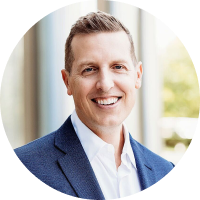I have spent a lot of time thinking about life after age 40 – and in a previous article (Midlife Crisis), I described how you can create a great second half of life. The key question, based on the book Halftime was, “How would I like to be remembered?”
I wanted to carry this middle-age topic further after reading another great book recently, From Strength to Strength, by Arthur Brooks. In the book, Brooks shows you how to accept the gifts of the second half of life with grace and joy. He states, “Change in your life is inevitable, but suffering is not. He breaks the adjustment down by describing two primary types of intelligence in life.”
The first type of intelligence is referred to as “fluid intelligence.” This is the ability to reason, think flexibly, and solve novel problems. In other words, it’s what we generally think of when we think of raw smarts – particularly with reading and mathematics.
Fluid intelligence is what largely helps successful people do so well early in their careers. Unfortunately, there tends to be a pretty steep decline in it when we hit age 40 and older. Personally, I noticed a decline in my ability to think on my feet quickly with numbers when talking to a client about their investment plan.
The second type of intelligence is referred to as “crystallized intelligence.” This refers to the ability to effectively use a stock of knowledge learned from the past. Fortunately, this type of knowledge tends to increase with age through one’s forties, fifties, and sixties – and hangs around until pretty late in life.
For me, the simplest way to distinguish between the two intelligences is that when you are young, you have raw smarts; when you are old, you have wisdom. Using a fictional character, I am picturing Obi-Wan Kenobi as the prototype of someone who learned to evolve from fluid intelligence strengths to embracing his crystallized intelligence ramping up in his later years.
As I’ve been absorbing this book, I thought about how Michael Jordan evolved his game as he aged in the NBA. In the first half of his career, he was able to overpower everyone athletically – frequently blowing by defenders to get to the rim, where he was able to rise and finish most of his shots with his incredible leaping ability. Jordan’s athletic ability and peerless competitive drive helped him lead the Bulls to three straight NBA titles by the time he was age 30.
As everyone knows, Jordan returned to the NBA after his short baseball career. This time around, he was no longer in his athletic prime. Where before, he could likely jump higher and move faster than anyone in the league, that was no longer the case at age 32 and beyond. MJ wisely redefined his game by taking more outside shots and becoming an elite post-up player. He became virtually unguardable – again – this time around by perfecting his patent bump fadeaway shot.
More than anything, Jordan depended on outthinking his opponents versus dominating them athletically. It isn’t a stretch to say that Jordan was even more effective during these later years when he won three straight NBA titles – again! His second round of titles was arguably more impressive, including the historical 96 season when the Bulls won 70 regular season games. Jordan was also the oldest player ever to win a scoring title, doing this at age 32, 33, and 34.
Similarly, I believe as entrepreneurs, we need to adjust how we operate to ensure success in our 40s and beyond. Michael Jordan was able to create Jordan 2.0 and extend his career, and play at a high level late in his career. The challenge and opportunity for entrepreneurs is to create our 2.0 versions – based on new strengths that are emerging.
The key for us is to get on that second curve – and start learning how to use your wisdom. As I look ahead at age 46, I want to lean into my increasing crystallized intelligence by:
- Allocating more time for thinking, reflecting, and connecting the dots for better client and firm strategies;
- Prioritizing coaching and teaching of emerging leaders to help drive our firm to places I can’t on my own;
- Becoming a more willing delegator to younger people who are able to perform better than me in raw smart situations;
- Proactively strip things in my life that aren’t aligned with my primary purpose – such as running client reports and instead re-deploy that time to more thinking on behalf of clients
To add a spiritual perspective to this topic – which for me is most important – I want to lean into a passage from 2 Corinthians 12:10. Paul wrote that the secret to going from strength to strength is to recognize your weakness.
“…For when I am weak, I am strong.” Powerful words from a wise man who was on a big-time mission in his own second half of life. In a small way, I hope that you and I can lean into our second-half mission with awareness of our new strengths – with grace and joy.
The content of this article is developed from sources believed to provide accurate information. The information is not intended as tax or legal advice. Please consult legal or tax professionals for specific information regarding your individual situation. All expressions of opinion are subject to change. This content is distributed for informational purposes only, and is not to be construed as an offer, solicitation, recommendation, or endorsement of any particular security, products or services. Past performance is not a guarantee of future results. Index performance does not reflect the expenses associated with the management of an actual portfolio.


